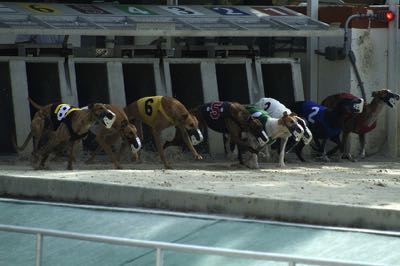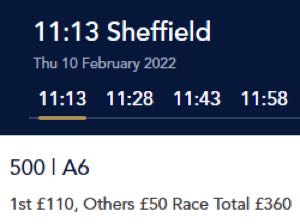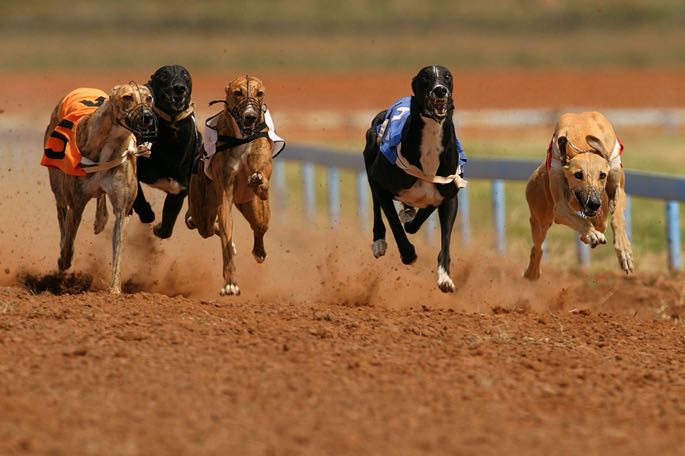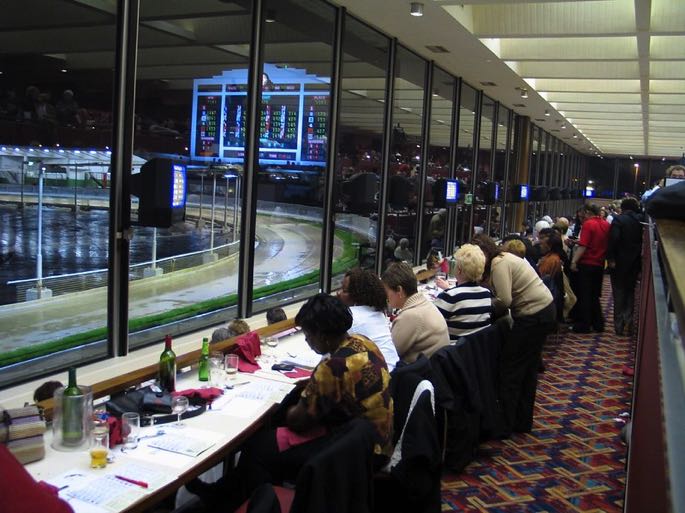
W Digital / Bigstockphoto.com
In order to help keep most races largely competitive, not all greyhound races are created equal. Instead, every single race around the track you see will have its own classification, one that gives you some indication of its quality. As a general rule, the better the grade of the race, the faster the competing greyhounds will be, much like how it works in horse racing.
It is not quite as straightforward as that though, which you will know if you start looking at the racecard for some upcoming meetings. Not only do most races have a number assigned to them, indicating their quality, but there will also be a letter too. With lots of possible combinations, it can be easy to lose track of what everything means if you are fairly new to the sport. Fear not though as this complete guide to greyhound gradings though will tell you everything there is to know.
Where Do I Find the Race Grade?
 Before exploring what all the different letters and numbers mean, it is useful to know exactly where you will find the grade for a particular race. It is something that should always feature prominently on the racecard for a race, whether a digital or paper version.
Before exploring what all the different letters and numbers mean, it is useful to know exactly where you will find the grade for a particular race. It is something that should always feature prominently on the racecard for a race, whether a digital or paper version.
In this instance, we can see that the 11:13 contest at Sheffield is an ‘A6’ quality race. The number 500 to the side of the A6 has nothing to do with grading, rather it is the distance (500m) of the race. Gradings change on a race-by-race basis too so it is not that all Sheffield races on 10th February will be A6. A few might be but there will always be a wide range of different grades so all quality of dogs have an appropriate chance to compete.
What Do the Letters Mean?
As per the example above, most races will typically have a letter followed by a number. ‘A’ is the most common letter to see, by a considerable margin, but it is not the only one by any means. There are a variety of different codes that relate to the distance of the race, the age of the competing dogs or the type of race. All these codes form part of what is known as a ‘Graded’ race.
| Grade | Used For | Notes |
|---|---|---|
| A | Standard (Middle Distance) Races | On a standard track a middle-distance race will be around 450/500m. |
| B | Standard Race (where a course has an alternative standard distance) | Where the standard distance at the track is a little longer or shorter than the usual range. |
| D | Sprint Races | Short-distance races that require dogs to have superb acceleration. Sprint races are always over 200m but often less than 350m. |
| H | Hurdles Race | Not as common as in horse racing but these do exist. In such races dogs are required to jump over some (fairly low) obstacles. |
| HP / Hcp | Handicap Race | The position of some starting stalls will be adjusted to give certain dogs a head start depending on their ability. All traps will then open simultaneously afterwards. |
| M | Marathon Race | The longest distance greyhound races you will find, often around 800m to 1000m. |
| N | Novice Race | These are races for previously unraced or very inexperienced dogs. A novice greyhound must qualify over the distance they wish to compete over (in non-novice races). |
| P | Puppy Race | Restricted to any dog under 24 months (but must be older than 15 months as this is the minimum age). |
| S | Stayers Race | Longer distance than standard, so providing a stamina test, but not as far as a marathon race. A stayers race is usually around 600m/700m. |
All these are what are known as ‘graded races’ and they can be quite challenging to call correctly with races typically decided by very small margins. Regardless of the grading, UK and Irish racing features six dogs as standard. It is only when looking at international races that you may find there are eight dogs featuring.
What Do the Numbers Mean?

This part is far more straightforward. The lower the number, the better the standard of the race, so your average A3 race will see faster dogs than an A8 race, for example. Regardless of whether it is a sprint, middle distance, marathon race or anything else. 1 always indicates it is the top contest within that category.
The value of the lowest number can very, for B grade races the lowest is 6 while for A races 10 is usually the very lowest although some tracks can operate slightly different. In previous years Romford had three A1 divisions followed by A2, A3 etc. going down to A8. They reorganised their system in 2019 though to have a straightforward and much more traditional A1 to A10 structure.
A1-A3: Top Races
Ten separate divisions within the most common dog-racing distance may seem like a lot but it does help ensure contests are close because there is an appropriate standard for almost all runners. If there were only A1, A2 and A3 races for instance, there would be much wider differences in ability within each classification.
Dogs that compete in the top races, mainly A1 or A2, may well make it into an Open Race (discussed below) if they are able to impress at this level. Many, however, are not good enough to make that next step up as the competition is so fierce.
A7-A10 Races: Where Greyhounds Start Their Career
At the other end of the scale, we have A7-A10 races and this is where greyhounds may start their career as they have not yet reached peak speed, or where they end up prior to retirement as their level drops. The difference in speed is not obvious to the naked eye though.
Even at the lower levels greyhounds are no slouches so we are only talking about a speed difference of around 2mph or 3mph. Whilst this may not be an obvious difference to those new to racing, for dogs that race at nearly 40mph, and may not seem like much, it is enough to make a three or four second difference in a 500m race, which is a gigantic gulf by dog racing standards.
Difference in Prize Money Across Grades
Prize money is not set in stone across the country as different courses and different races can offer a little more or less for the same grade race featuring elsewhere. For a general guide though, the below table shows the total prize funds per race for an evening meeting at Sunderland.
Prize Money at Sunderland
| Grade | Prize Money |
|---|---|
| A1 | £450 |
| A2 | £410 |
| A3 | £400 |
| A4 | £390 |
| A5 | £385 |
| A6 | £380 |
| A7 | £350 |
| A8 | £345 |
| D3 | £300 |
As you can see, the difference in payouts between the races are very small with only an extra £5 or £10 added to the purse for each step up in quality. This is quite the contrast from horse racing where the difference between a Class 6 and Class 5 race is likely to be a four-figure amount, though the sums in general are far greater in horse racing. It also serves as a reminder that A1 races are not the top contests around, rather they are simply the best of the standard, graded, contests.
To see how Sunderland compares to another course, here is how the grading impacts prize money at Hove. In some instance they offer the same rate which is available at Sunderland but they are more generous with their A1 and A2 purses. It is also interesting to note that S races, so stayers races, pay more than the equivalent A race. D races (sprints) at Sunderland, by contrast are distinctly less valuable.
Prize Money at Hove
| Grade | Prize Money |
|---|---|
| A1 | £475 |
| A2 | £435 |
| A3 | £400 |
| A4 | £390 |
| A6 | £355 |
| A7 | £350 |
| A11 | £300 |
| S1 | £480 |
| S2 | £440 |
Open Races
The other code you may see on a racecard at the dogs is ‘OR’ which is not a form of graded race, rather it stands for ‘Open Race’. It is the highest standard of racing you will find but there are also sub-divisions within it. The leading races are classed as ‘Major’ Open Races and these will either be awarded Category One, Category Two, or Category Three status. Below this you have ‘Minor’ opens which represent the least prestigious OR contests. Prize money in minor races is comparable to that of top graded races but there can be far more noticeable differences when entering Major Open Race territory. Even at Category Three, races will pay a minimum of £800 but up to £1,800. Category Two always offers more than this upper limit, usually up to a maximum of £6,500.
Category One is a little curious when it comes to prize money as at times the available purse can be lower than for some Category Three races. It does also cover the leading greyhound contests around though, such as the £25,000 Puppy Derby and £15,000 Winter Derby. Regardless of prize money though, these are the races trainers and owners want to win due to their status.
A very small number of Open Races work on an invitation-only basis. The RPGTV Juvenile in March for instance requires nominations submitting a week prior to the race with the RPGTV themselves deciding who makes the cut. In this case, any entry must have been whelped after a certain date and must not have competed in the Greyhound Derby. Invitations are not necessarily required to have very specific entry requirement, although it is not unusual for this to be the case.
Does Grading Matter When Betting?

Kurt / Flickr.com
It can be useful to know the classification of race when betting, so it is not something you want to ignore. If for example, a particular dog has been stuck in a bad spate of form you might not normally consider them because of this. When this happens dogs can end up moving down a grade or two, in order to give them a better chance of success as they will be facing slower rivals. A dog that regularly finishes 4th or 5th in an A1 contest could very feasibly win an A3 or A4 contest, for example.
Looking at Performance
This works in both directions of course, as you may have a dog that has been performing excellently of late so their trainer/owner has decided to put them in a more challenging (and more valuable) contest. It could be that they continue to thrive but not all dogs will fare as well when up against stronger opposition. This is a judgement call you will have to make but knowing how large the step-up is will help you do just that.
Looking at Distance Typically Run
It is also useful to know what distance a dog typically runs over as it may be that they are more suited to a particular type of race. Sometimes running over a shorter or longer distance can be something that sees an improvement in their form. Although you can easily find the exact lengths of all their previous contests on a racecard, seeing the classifications such as D, A, S etc. makes it easier to see the overall picture.
Timeform A4 Nottingham Race Card Example
Not all websites that supply racecards will give you convenient access to the grades of previous races but Timeform do this. Taken straight form their website, here is the record of one greyhound entered for an A4 race at Nottingham.

After seven races without a win, the decision was taken to drop the greyhound back to A4. At this level, the greyhound has an excellent record so they were trading as the 6/4 favourite to end their winless run. They have also reverted back to a middle distance (A) race, which is what they are more accustomed to.
This is really the only use of the grading to spectators and those betting on races. It is not as though the dogs will be noticeably slower as we are only talking a maximum difference of 3mph between the most elite greyhounds and those on the verge of retirement. Something like this is not something you would ever really notice so it is not as though low-grade contests appear painfully slow or lack the excitement of the better contests.
That said, Open Races do usually provide the most thrilling spectacle as there can be some pre-race hype and there may well be dogs involved that you recognise. The added familiarity combined with knowing it is an elite contest can make such races the best to tune into.
